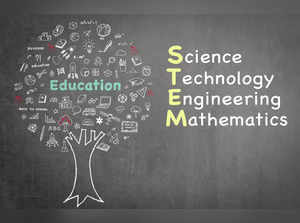 iStock
iStockIn 2015, UNESCO estimated that the country’s full-time research workforce stood at around 2 lakh while a 2019 Indeed survey revealed how, despite producing the most graduates in the field globally, India’s STEM talent gap had grown two-fold between 2014 and 2018. A recent NASSCOM-Zinnov study indicates that India may face a shortage of 14 to 19 lakh techies by 2026.
With the advent of innovative technologies like Artificial Intelligence, Robotics, and the Internet of Things, the world is shifting toward automation.
Given this rich legacy, the dearth of STEM talent in India might come as a surprise to many – while India has produced the world’s top talent and many are known for their IT skills, our supply of such ‘STEM skilled’ manpower is far behind the demand of our own country.
The term ‘STEM skilled’ is the key here. India consists of the largest young population in the world, so the shortage is not in manpower or talent but in skills. To ensure that everyone gets better job opportunities, it is essential to provide them with STEM knowledge from an early age.
Given the rising demand for STEM talent in India and abroad, the nation's goal is to become a $5 trillion economy, and the large pool of youth that India has, the need of the hour is to drive our STEM education at full speed.
STEM is known to inculcate problem-solving, critical thinking, decision making, leadership, creativity, error prevention, and other attributes within its practitioners. It should be taken seriously as these qualities lay a strong groundwork for the next generation of professionals who are innovative, pragmatic, analytic, and come up with solutions that transform society for good.
Why should STEM Learning be done early to inculcate a sense of innovation?
STEM toys stimulate the child's interest in subjects like Science and Mathematics as they learn the concepts of these subjects through play-based learning. While playing with these toys, the children come up with their own ideas to carry out activities improving their decision-making abilities greatly.
Another reason for introducing STEM skills in the early years is to build a gender-neutral interest among children. In a study, it is concluded that if the students gain interest in math and science at an early age, it positively affects their performance.
With the focus of government initiatives like Atal Tinkering Lab (ATL) and National Education Policy (NEP) 2020 on innovation, key concepts, ideas, applications, and problem-solving, it is evident that India's long-term educational goals overlap with STEM education. This segment has become more important with the fast-growing penetration of technology across all walks of life. It is fair to accept that STEM education is the path to long-term and sustainable growth that our nation is looking for.
Sowing the Seed of Knowledge: Learning the Needs of the Learner
When speaking of educational reform, it's easy to miss out on its most critical piece, i.e. the learner. The policymakers, educators, and other stakeholders trying to solve this challenge must keep the learners at the heart of their approach.
Learners must be both the key drivers and the products of educational reform. We must push students on their quest for knowledge using innovative and play-based learning approaches. In doing so, we can improve key parameters of India such as the average online course completion rate, which is just 30% in most K12 online offerings. At Tinkerly our pedagogy is based on learning pyramid theory, and we have witnessed the completion rates to grow up to 80% when we offered a blend of STEM toys in our robotics, coding, IoT, and AI courses.
Lastly, it's best to pique a student's interest in STEM as early as possible. Then, if we wish to truly become the global hub of creativity and innovation, we must first unleash the child-like imagination on the playground of STEM. The best innovations will come when STEM will be a passion, not just a career choice, and that can be achieved by introducing STEM in the form of toys and games making it a child’s favourite hobby.
(The writer is co founder Tinkerly)











 Get Unlimited Access to The Economic Times
Get Unlimited Access to The Economic Times
